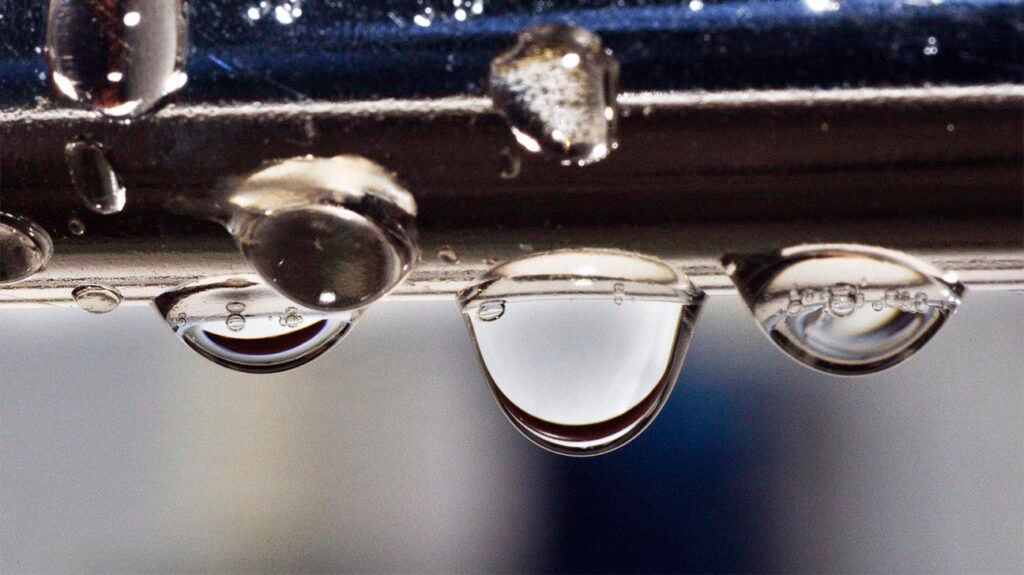Aquagenic urticaria is a rare allergic response to contact with water on the skin. People with this allergy may develop hives when they shower, sweat, or cry.
People with aquagenic urticaria develop itchy, uncomfortable hives in response to contact with water.
This type of allergy can greatly affect a person’s quality of life. However, treatment can help with symptoms.
This article outlines the symptoms, causes, diagnosis, and treatment of aquagenic urticaria.

After contact with water, a person with aquagenic urticaria develops hives
The hives typically resolve in 30–60 minutes after they appear.
A person may also experience itchiness, an uncomfortable prickly feeling, or burning at the site of the hives.
Water allergy-related hives often appear on the upper arms and torso. They rarely show up on the soles of the feet or palms of the hands.
In the case of a severe allergic reaction, a person may develop additional symptoms, such as wheezing or shortness of breath.
The exact underlying cause of aquagenic urticaria is unknown.
The first theory posits that water that dissolves allergens on the skin may pass them onto mast cells. Mast cells are responsible for allergic reactions.
The second theory suggests water may interact with the oils that naturally appear on the skin. The interaction between the oil and water may activate mast cells, causing an allergic reaction.
In a 2022 review, researchers analyzed 59 studies involving aquagenic urticaria. Their findings suggest that:
- the condition primarily affects females
- it can occur between birth and age 54 years, with an average onset of about age 19
- people can inherit the condition or acquire it later in life
Future studies may help researchers better understand the underlying mechanics causing aquagenic urticaria.
Diagnosing aquagenic urticaria
If a doctor suspects an allergy to water, they may recommend a water challenge test. This test involves placing a damp cloth on a person’s skin for 20 minutes. An allergic reaction indicates aquagenic urticaria.
Researchers recommend using room temperature water for the test. When a doctor uses water that is too hot or cold, it can create a false positive since some people may react similarly to hot or cold temperatures.
If a doctor suspects other reasons for the skin reaction, they may recommend additional allergy tests.
There is
Some treatment options include:
- Oral antihistamines: Antihistamines are often a first-line treatment. They help block histamine, the chemical responsible for causing allergic reactions.
- Phototherapy: Phototherapy uses ultraviolet (UV) light to help thicken skin and reduce mast cell activity. When active, mast cells release chemicals that can create an allergic reaction.
- Topical barrier creams: A doctor may suggest using barrier creams or ointments, such as petroleum jelly. This therapy helps prevent water from penetrating the skin.
- Other medications: In some cases, a doctor
may recommend omalizumab, an asthma medication. Doctors may also prescribe selective serotonin reuptake inhibitors (SSRIs).
Treatment effectiveness may vary. People may need to try several approaches before finding an option that works.
A
A 2022 review included 59 studies involving 77 people living with aquagenic urticaria, suggesting the condition is relatively rare.
Due to the condition’s rarity, researchers do not have a clear understanding of how or whether aquagenic urticaria affects life expectancy.
However, it can significantly reduce a person’s quality of life since contact with water is a typical daily occurrence.
The following section provides answers to frequently asked questions about water allergy.
Does aquagenic urticaria ever go away?
Currently, there is no cure for aquagenic urticaria. Hives typically clear up within
How do people with aquagenic urticaria shower?
Because people with this condition have an allergic response to water, they may alter their bathing or showering habits. People with the condition may shower infrequently or use alternative cleaning methods, such as alcohol-based cleaners.
While treatment can make it easier to shower, a person with aquagenic urticaria can discuss showering or bathing options with an allergist or other qualified healthcare professional.
Can someone with aquagenic urticaria drink water?
Drinking water does not typically involve water-to-skin contact. People with aquagenic urticaria should be able to drink water without triggering an allergic reaction.
Aquagenic urticaria is a rare condition where the skin develops an allergic reaction to water.
Diagnosis involves exposing a person to water to test whether a reaction occurs.
Aquagenic urticaria can reduce a person’s quality of life. Working with a doctor or allergist to find the best treatment may help improve their well-being.
There is no standard treatment. Doctors may recommend antihistamines, phototherapy, or barrier methods to prevent allergic reactions and symptoms.
